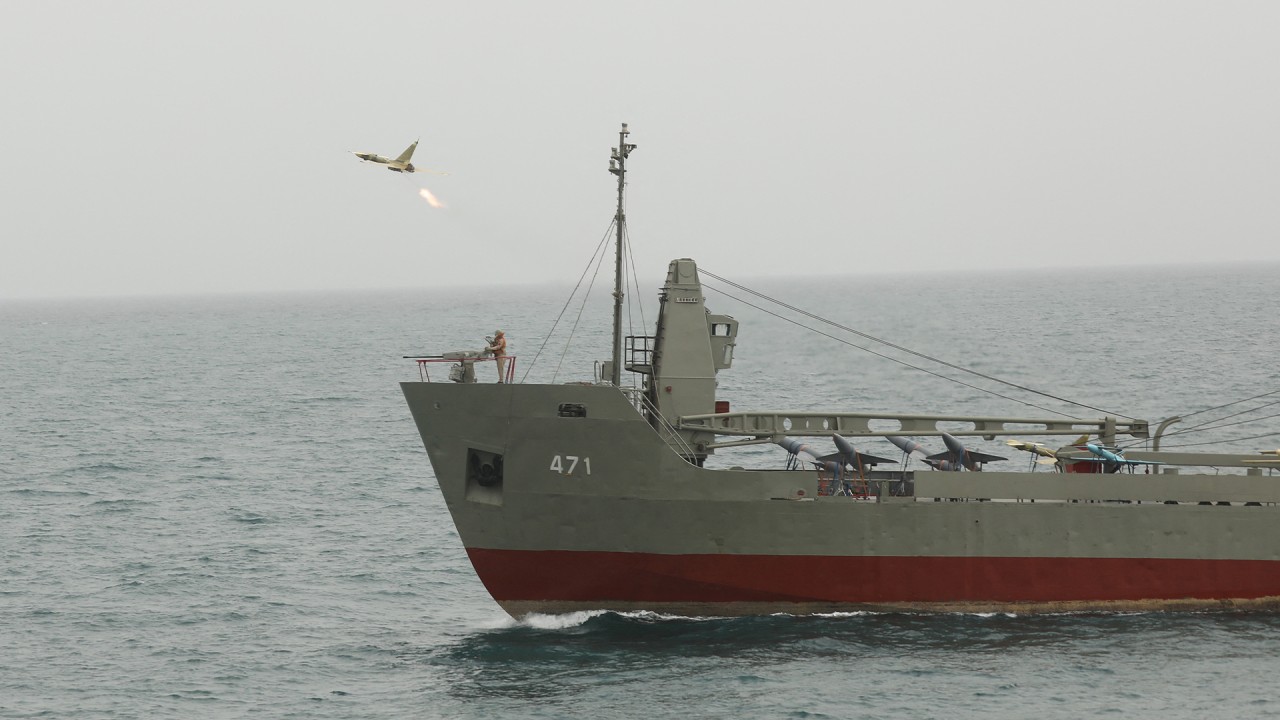
Unmanned surface vessels: the next frontier in China-US military rivalry?
- Both countries have USVs in development, with the US planning to match driverless ships with crewed fleets
- But there is still some way to go until the warships can take on the full range of functions
Unmanned surface vessels have emerged as a new battleground between China and the United States as both countries seek to develop driverless ships that could potentially change maritime warfare, according to one observer.
Late last month, the US Navy launched the unmanned surface vessel Mariner as a test vehicle for the service’s manned/unmanned ship programme.
The US Navy is considering sending crewed warships into battle with one or more unmanned escorts to help reduce the time needed to make decisions and increase “lethality”.
China’s AI drone vessel takes maiden voyage, passes first sea trial
According to the US Naval Institute’s news site USNI, Mariner is the third vehicle of its kind to be delivered to US Navy and is part of Ghost Fleet Overlord, a programme to accelerate the navy’s use of autonomous systems.
More broadly, the US Navy’s Chief of Naval Operations Navigation Plan 2022 calls for 373 manned ships and 150 unmanned ships, in an attempt to preserve global dominance in the face of a growing Chinese navy.
To that end, the US Navy established the country’s Unmanned Surface Vessel Division, to “meet challenges of the 21st century”, a unit that does not have an equivalent in the Chinese military.
Nevertheless, China is also progressing in unmanned surface vessels, albeit at a slower pace.
In June, China’s first domestically developed 200 ton-class (181-tonne) USV completed its first autonomous sea trial in waters off the Zhejiang province in eastern China.
Zhejiang-based Beikun Intelligent Technology started research and development on the project in late 2015, aiming to build a 100 ton-class, intelligent, autonomous and highly stealthy USV that could in high seas while making little noise.
Former PLA instructor Song Zhongping said China’s USV had to expand its capacity if it was going to take on a full range of functions.
“The USV is mainly used for surveillance and monitoring. It will take some time for it to be able to do all the tasks of manned vessels,” Song said.
He added that China’s development in other unmanned systems like drones and submersibles gave it an edge in building a holistic unmanned system.
Unmanned surface vessels can perform duties such as intelligence and data collection, reconnaissance, cargo transport, electronic warfare, and mine hunting.
They can also be armed and perform longer and more hazardous missions than crewed vessels, such as force protection, armed escort, anti-surface warfare, and patrols.
Other advantages included lower maintenance costs, no threat to crew safety, higher manoeuvrability and deployability in shallow waters.
Besides China and the US, Canada, Italy, Portugal and Norway are all developing USVs for environmental surveillance, reconnaissance and coastal surveys.
Timothy Heath, a senior analyst from the US think tank Rand Corporation, said unmanned surface vessels could change warfare on the water.
“The ability of unmanned ships to stay on mission for extremely long periods of time could significantly change warfare in the maritime domain. It may become more difficult to hide from these ships,” Heath said.
“Naval commanders are also likely to begin integrating unmanned surface and unmanned underwater vessels into their combat formations, due to the added power and lower cost that these platforms provide.
“Future battles at sea could consist of clashes between small armadas composed of both human crewed and uncrewed ships.”



